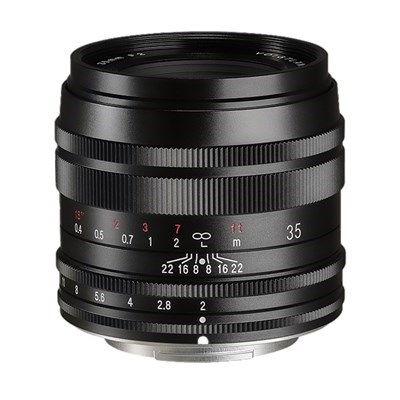The MACRO APO-ULTRON 35mm F2 X-mount is a large aperture standard macro lens designed exclusively for the FUJIFILM X-mount. The lens construction uses the latest optical system with three anomalous partial-dispersion glass elements in a six-group, nine-element configuration. In addition to natural colour reproduction without colour bleeding due to the apochromatic design, the lens has a maximum aperture of F2, an exceptionally large aperture for a macro lens, yet it is compact in size. Designed exclusively for the FUJIFILM X mount. Optics are optimized for the image sensor of the FUJIFILM X system cameras. This prevents distortion, light reduction, and colour casts on the periphery of the image without relying on the cameras optical correction function. Electronic Contacts for Information Communication with the Body The electronic contact enables highly reliable electrical communication between the lens and the camera body. By combining a communication-compatible body and the latest firmware (*1), Exif information, focus check, and shooting distance-linked display are supported, as well as in-body image stabilization and parallax correction for certain models.
The use of an all-metal helicoid unit machined and adjusted to a high degree of precision and high-quality lubricants which produce moderate torque ensure smooth focusing operation. Subtle focusing adjustment is possible. A 10-element aperture is used to make the opening formed by the diaphragm blades closer to a circular shape. Out-of-focus areas are rendered naturally, and point light sources are rendered with a soft, rounded bokeh effect. Directly operated mechanical aperture ring Like the VM mount and mirrorless mount Voigtländer lenses, the lens employs an aperture ring mechanism that directly opens and closes the aperture. The mechanism has 1/3 stop clicks so you can directly enjoy the feeling of operating it. The minimum focusing distance is 0.163 m. For focusing, a front-focusing method is employed in which the front four groups of six elements are moved back and forth. Compared with the method in which the entire optical system is extended, the front focus system enables shorter extension while ensuring high image quality in all ranges. To accommodate todays high-resolution digital sensors, axial chromatic aberration and lateral chromatic aberration have both been thoroughly suppressed.
